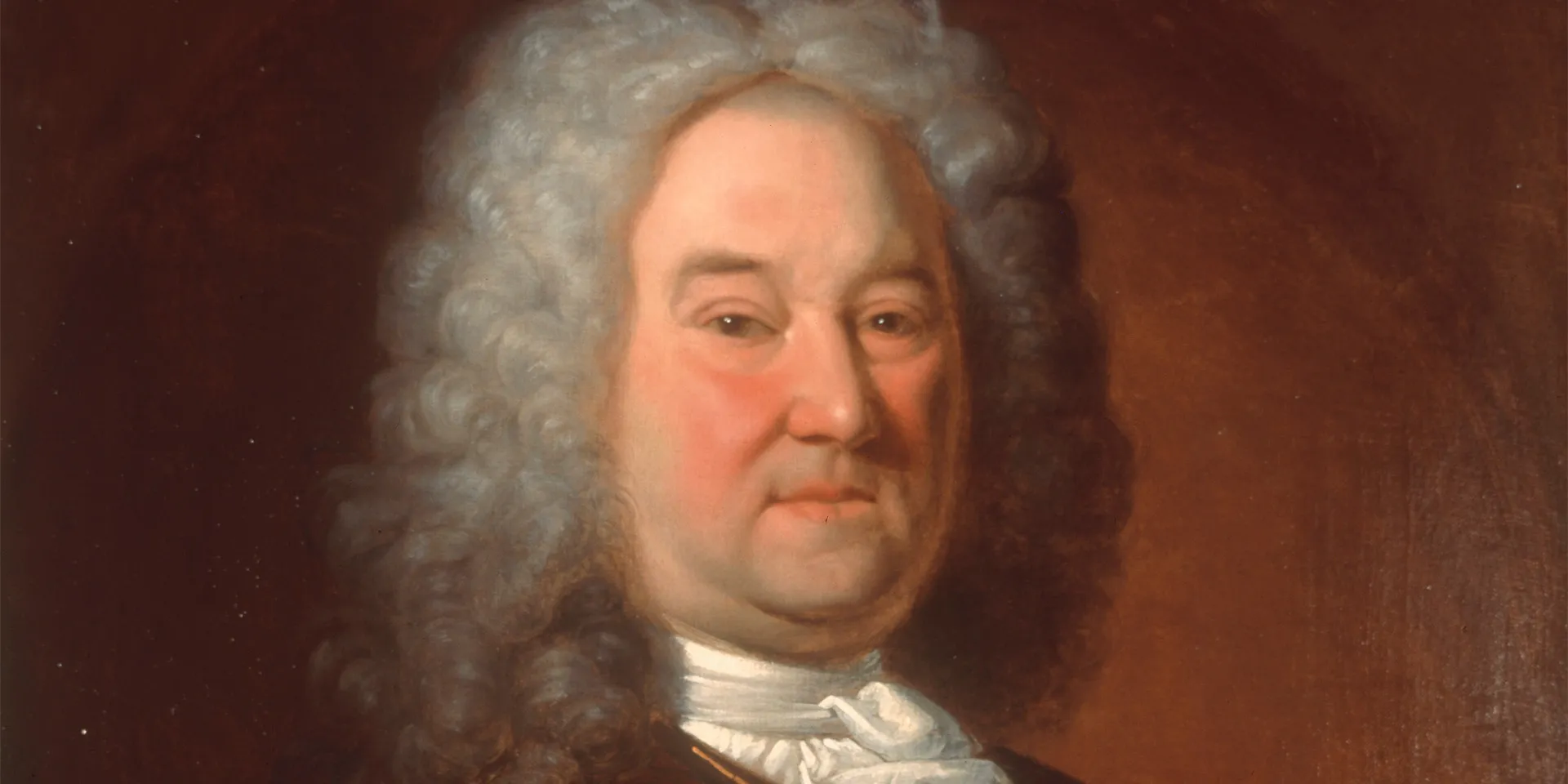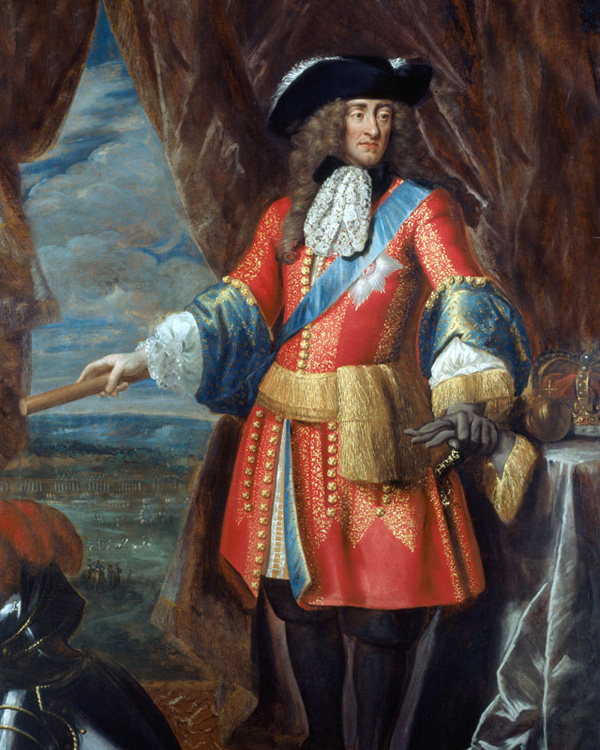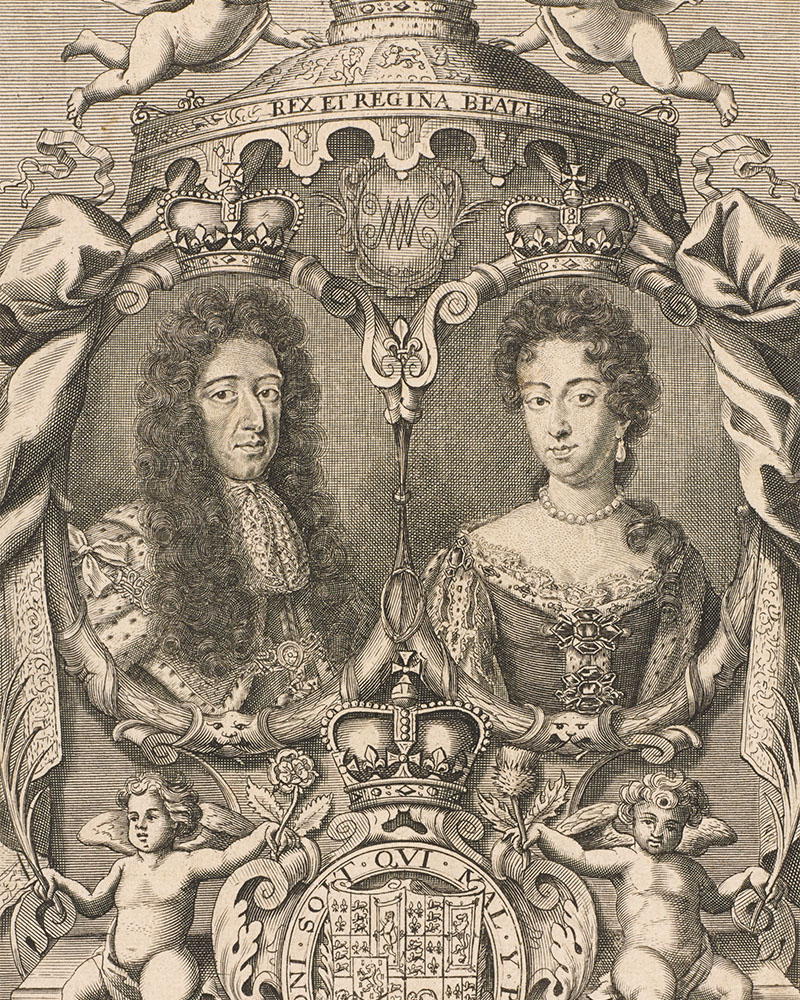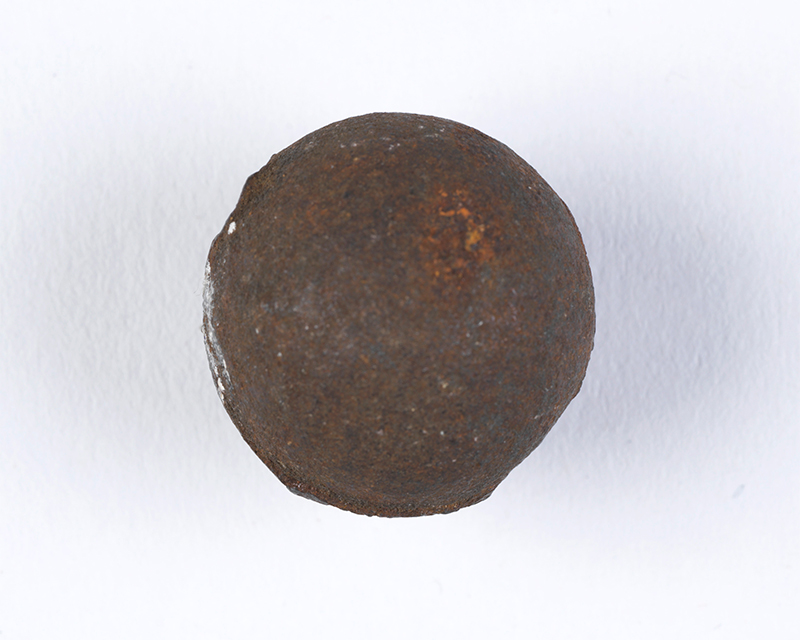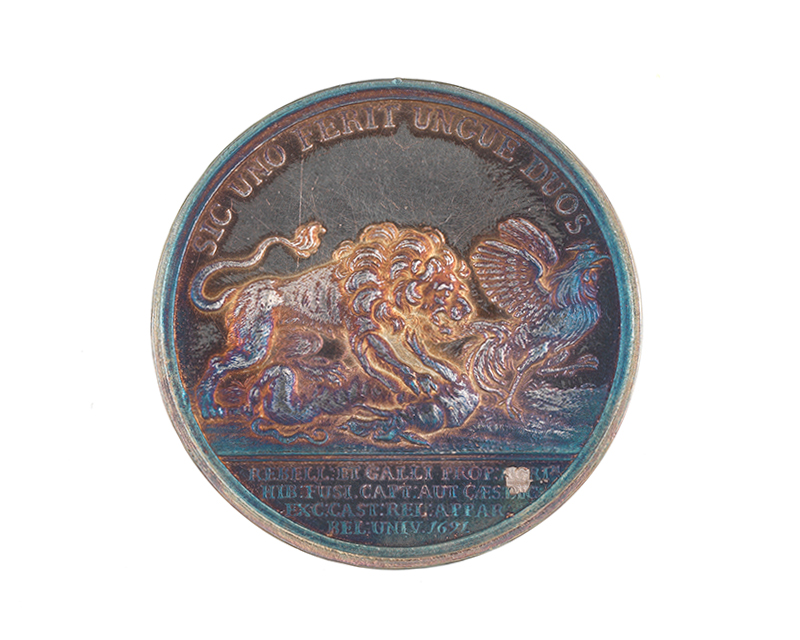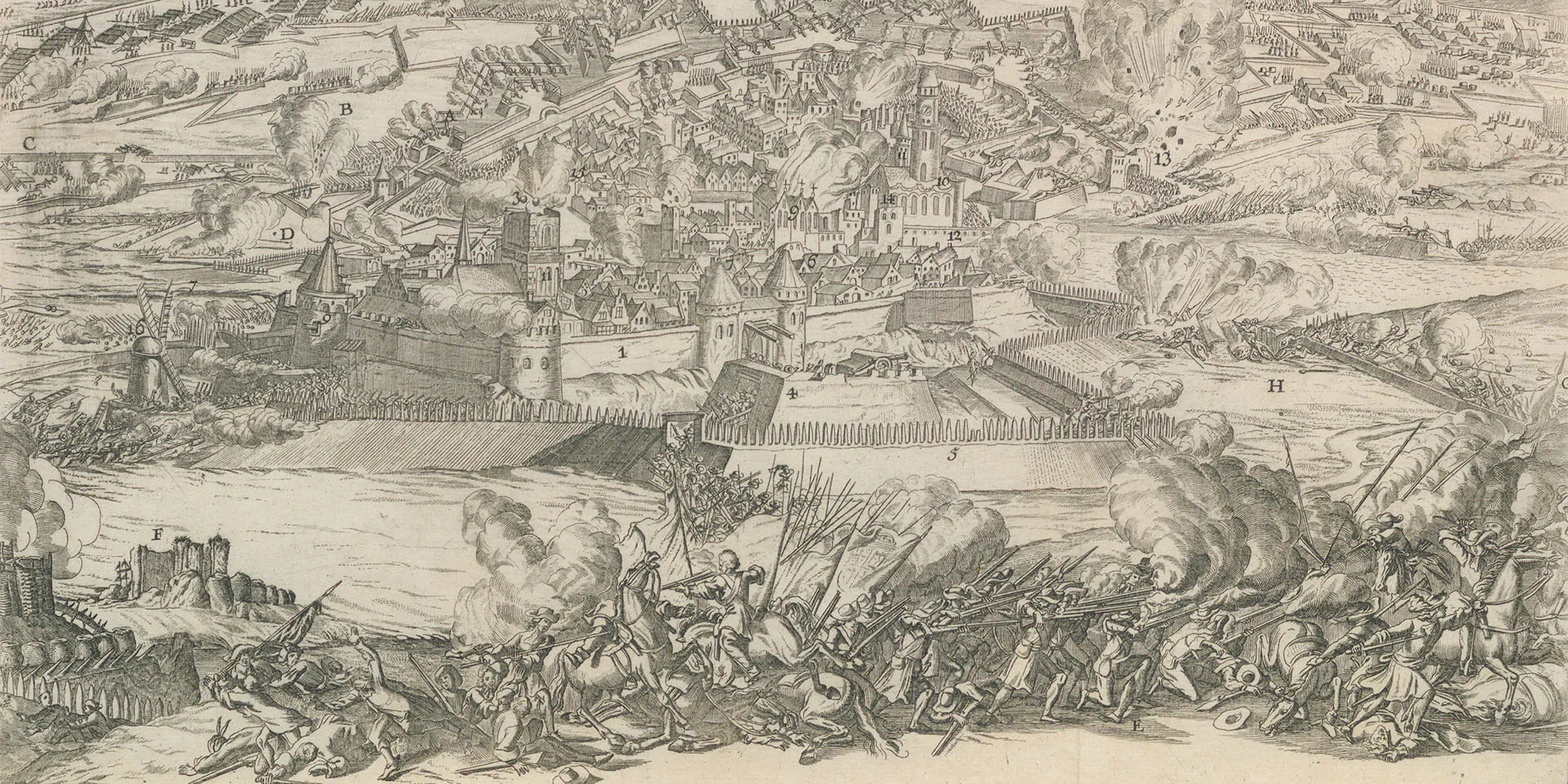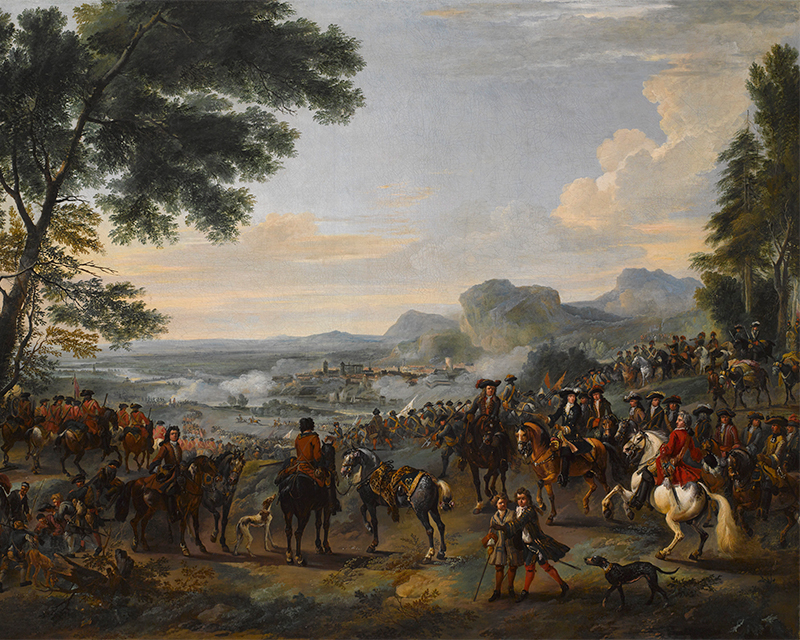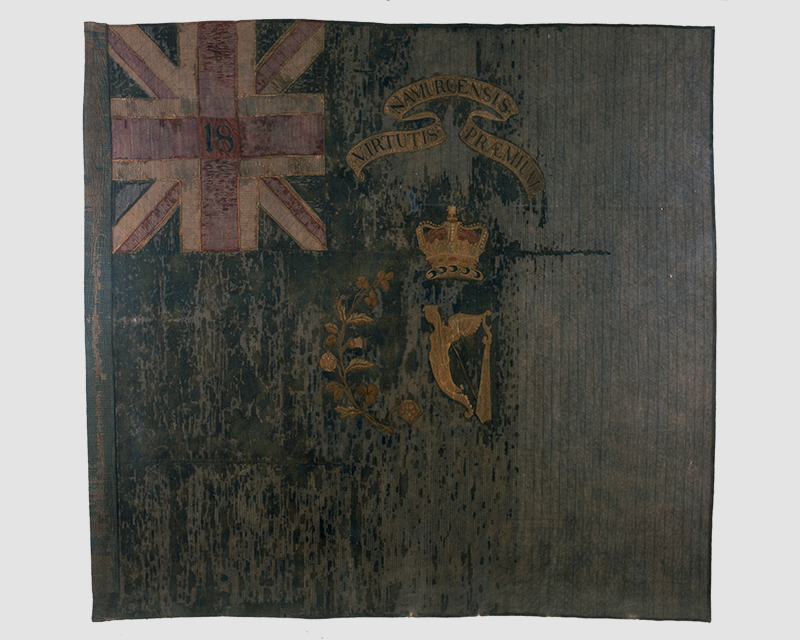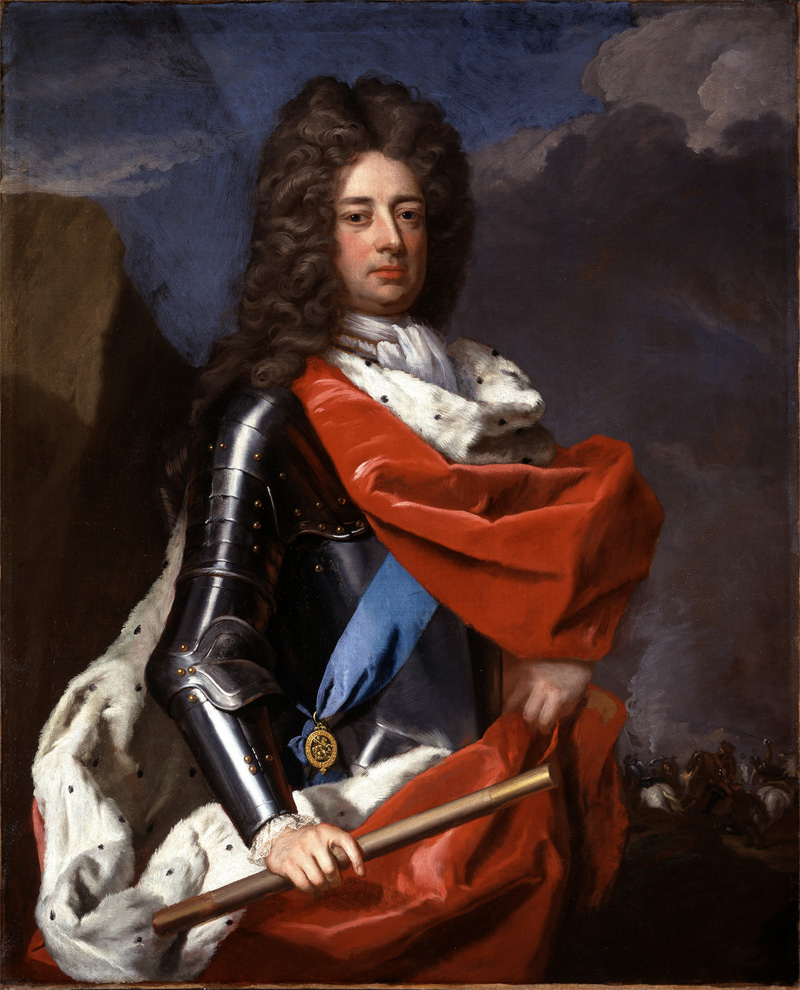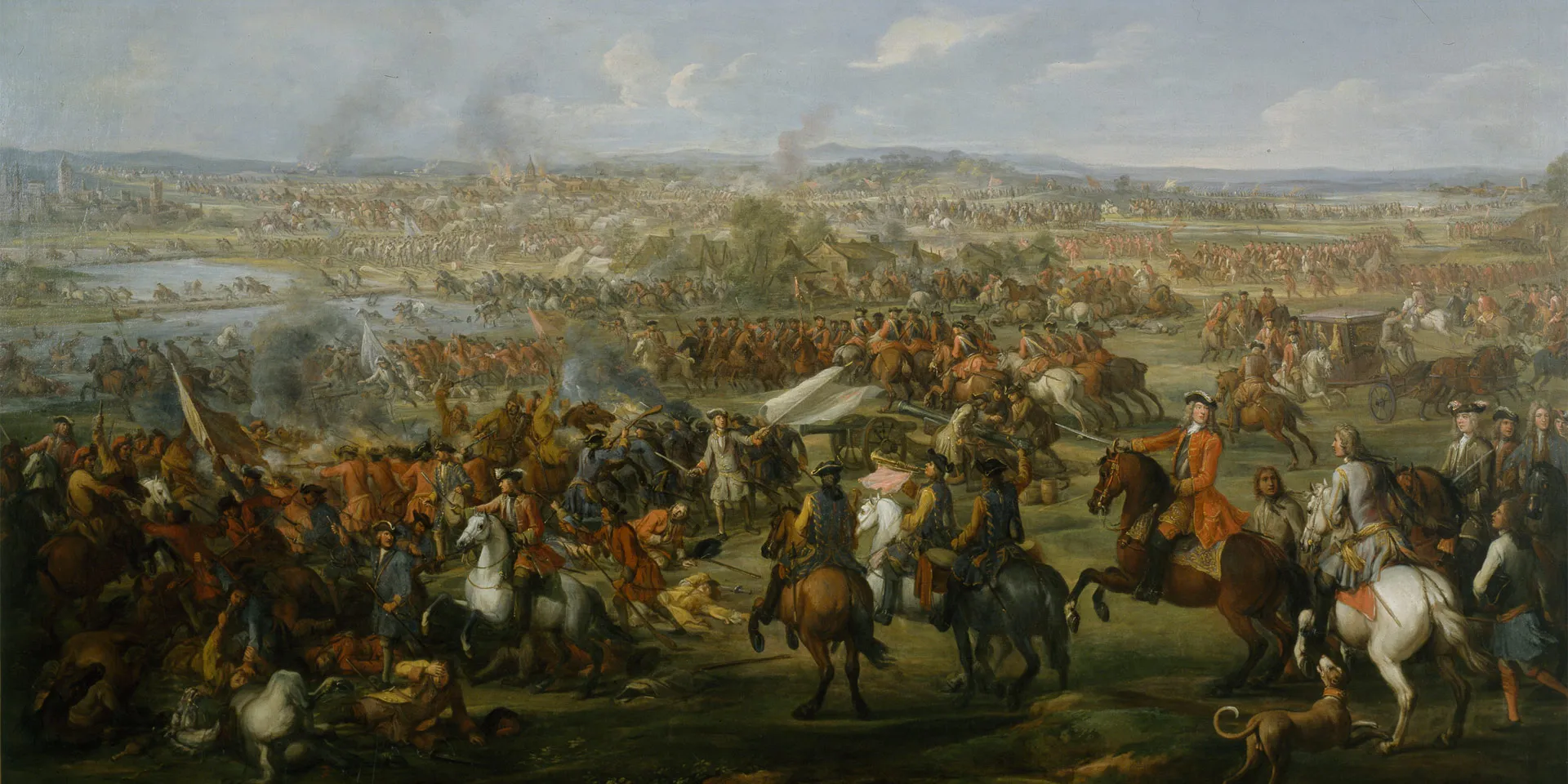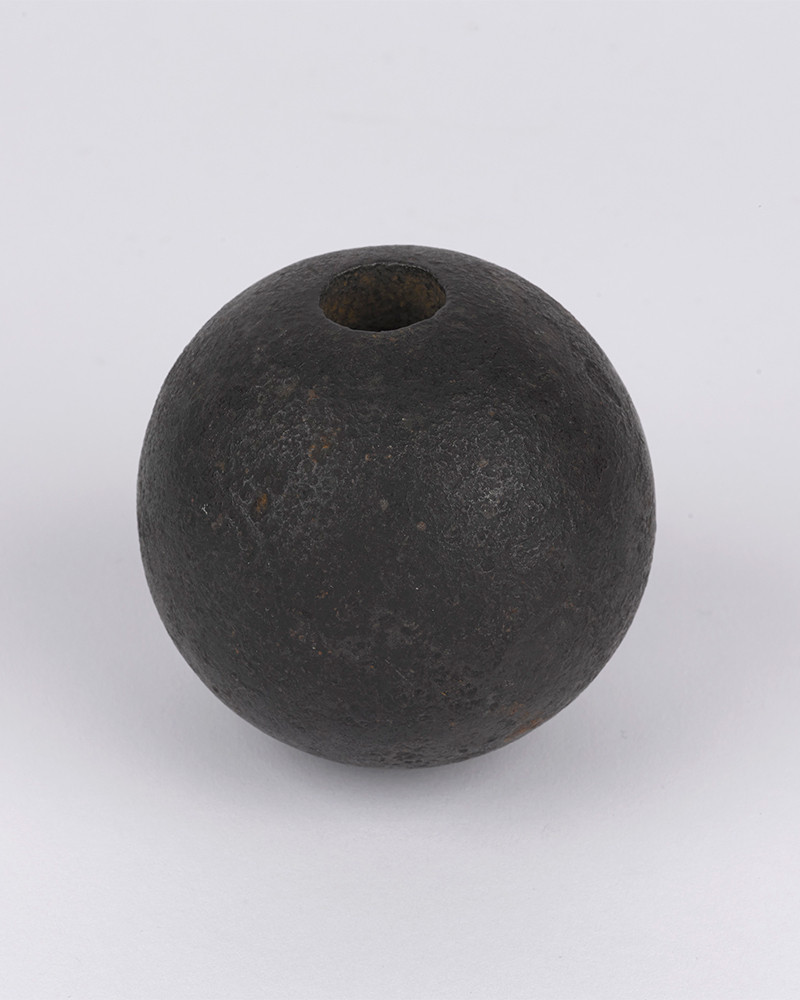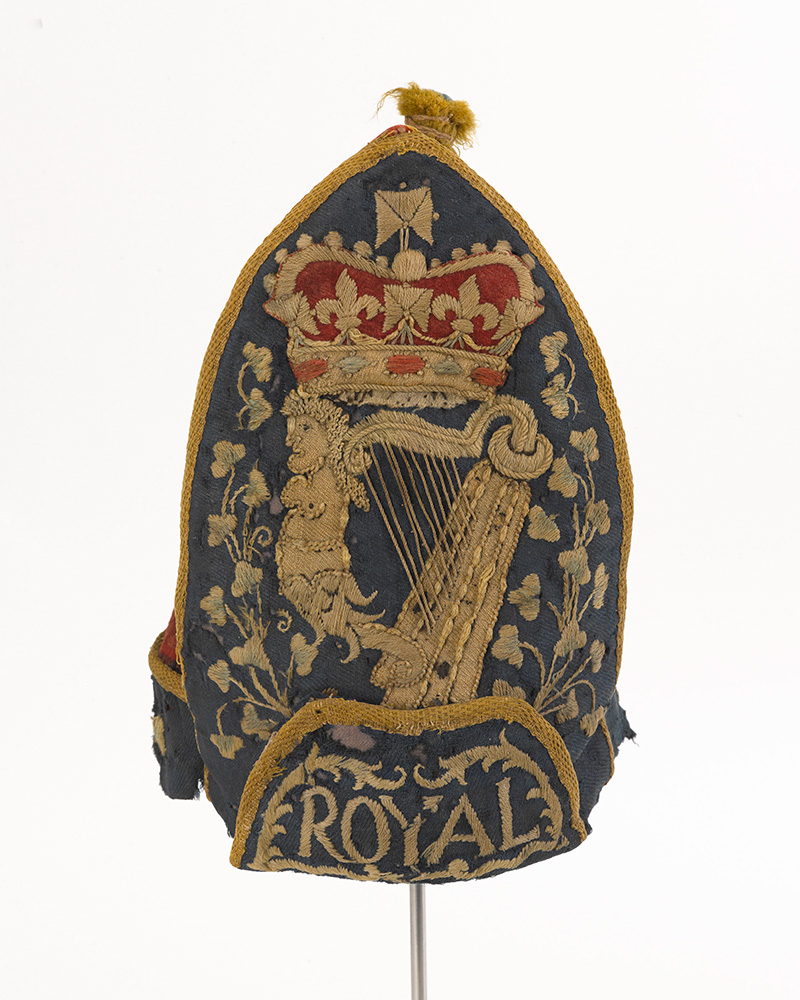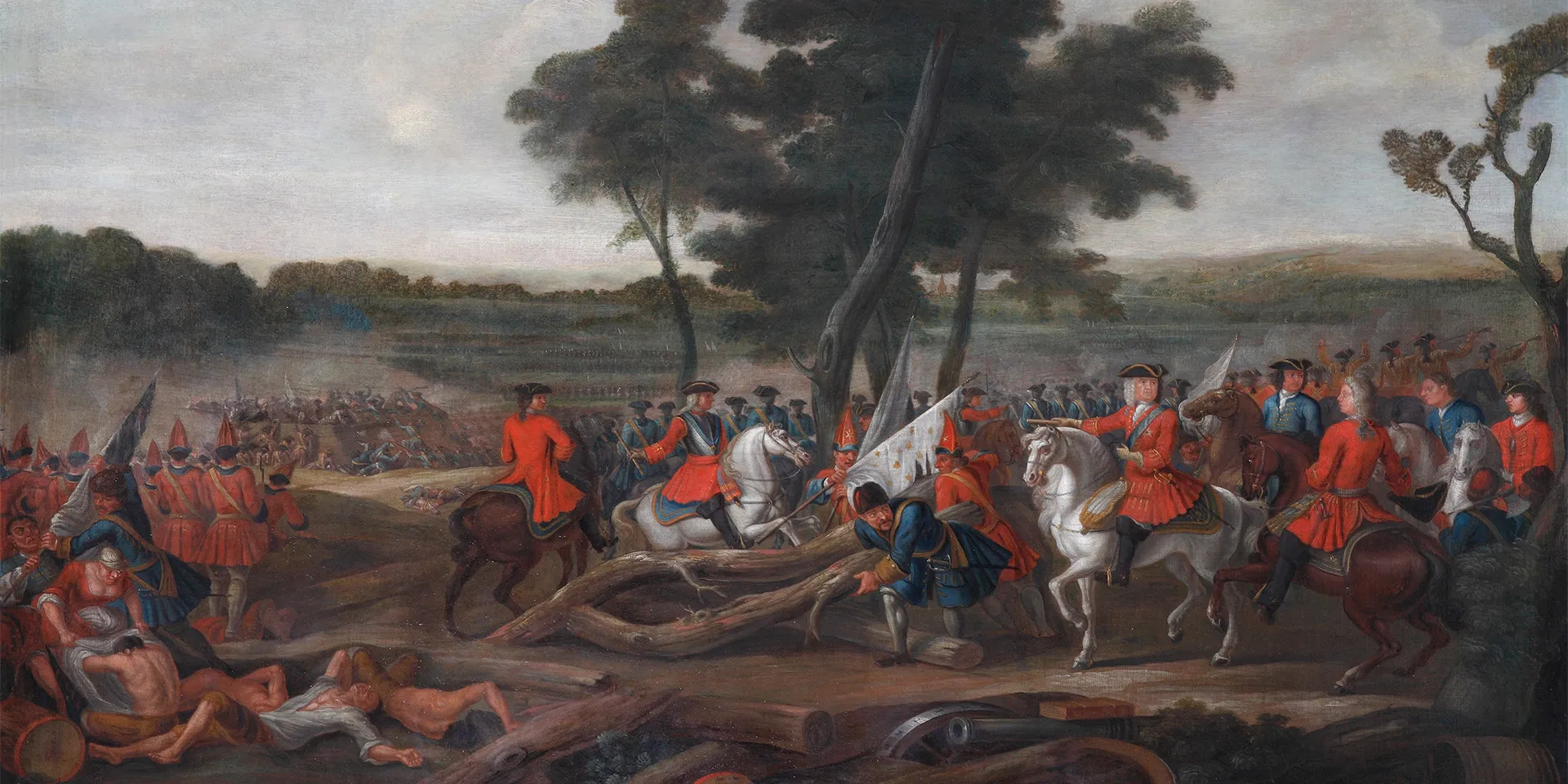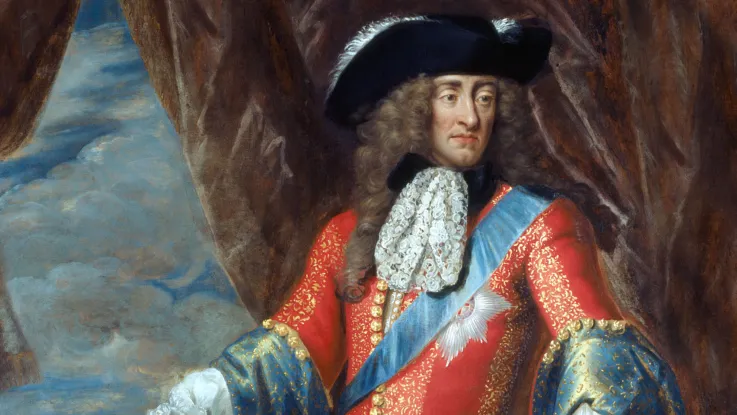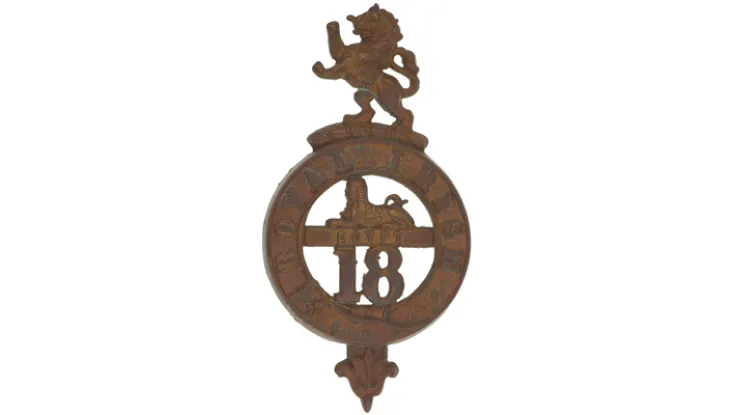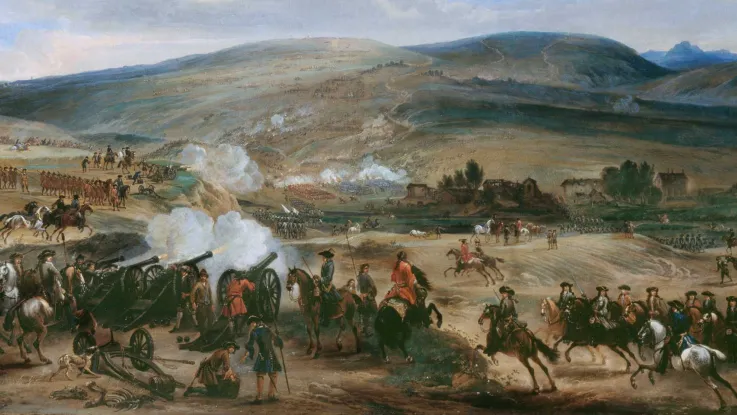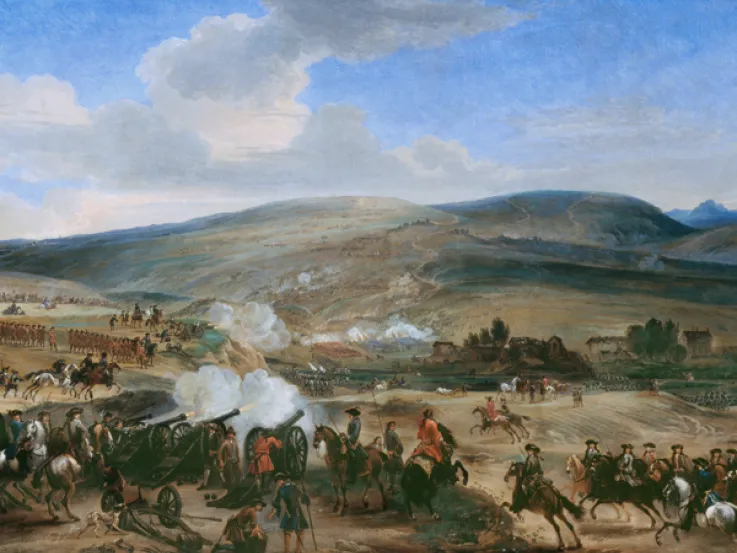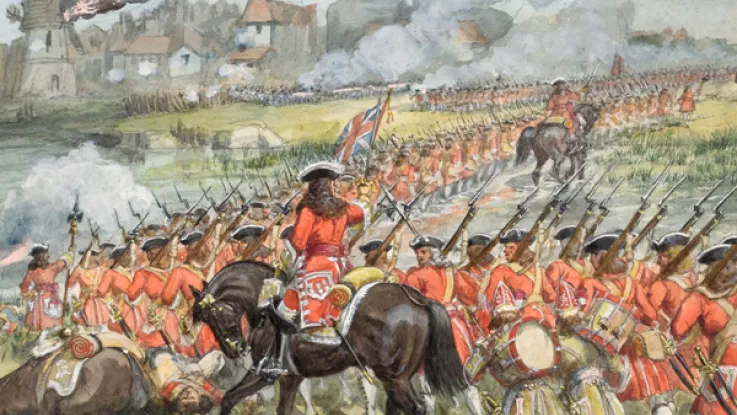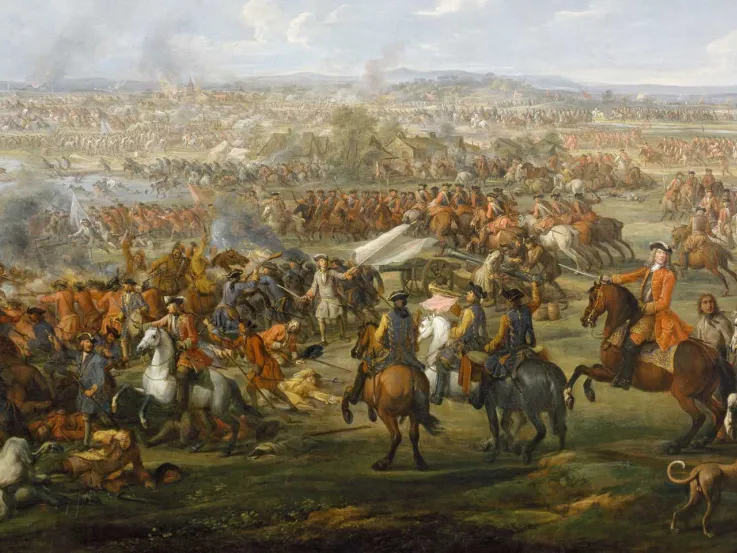Early life
Robert Parker was born in Kilkenny around 1665. His father was a Protestant farmer, most likely one of the many English and Scottish Protestants who had settled in Ireland over the previous century under a policy known as ‘plantation’.
He first acquired a taste for military life when he joined a company of schoolboys under James Butler, the future 2nd Duke of Ormonde, whom Parker would again serve under in later life. The group spent many a happy hour parading with wooden guns in front of Butler’s grandparents, the 1st Duke and Duchess of Ormonde.
In 1683, with no other career plans, Parker ran away from home and enlisted in the Army.
Setback and loss
His early military service was interrupted by the religious politics of the time. In 1687, he was dismissed during a purge of Protestants from the Army in Ireland carried out under King James II, who had acceded to the throne two years earlier.
This was part of a wider struggle between Catholics and Protestants in Ireland. The plantations of the 16th and 17th centuries had seen many Irish Catholics dispossessed of their lands and stripped of their rights. With a sympathetic monarch now on the throne, Irish Catholics - led by Richard Talbot, Earl of Tyrconnell - were attempting to take back control.
For Parker, this setback was soon followed by a more devastating loss. On returning home, he found that his father had been attacked and robbed by a marauding band of Catholic dragoons. Parker blamed this traumatic event for the untimely death of both his parents shortly afterwards.
Glorious Revolution
In September 1688, Parker resolved to travel to Holland and enter the military service of William, Prince of Orange. One of the great figures of Europe, William was the leader of the Dutch United Provinces. He also headed the coalition formed to frustrate the expansionist ambitions of the French King Louis XIV during the Nine Years War (1688-97).
In November 1688, William arrived in England and successfully displaced James as king in a bloodless invasion remembered as the ‘Glorious Revolution’. This transformed Parker’s personal situation, enabling him to re-enlist. He joined the Earl of Meath’s Regiment - formed in Ireland by the Earl of Granard in 1684 - which was to enjoy a long and illustrious history as the Royal Irish Regiment.
Parker’s decision to re-enlist was not without some trepidation. He now knew enough of the hardships of soldiering to reflect that ‘carrying a brown musket was but a melancholy prospect’. However, he resolved to advance himself in his profession by gaining the respect of his officers and becoming an expert in the use of arms.
Ireland
Parker’s first taste of battle came during the Irish campaign of 1689-91, which pitted the forces of the newly-crowned William against the deposed James and his supporters, the Jacobites. The conflict here would settle the unfinished business of the Glorious Revolution and decide the fate of the British Isles, but it was also part of the wider struggle against Louis XIV of France, who backed James’s claim to the throne.
In July 1690, Parker’s regiment formed part of William’s army at the Battle of the Boyne. This ended in a famous defeat for James, causing him to flee the country. However, the war was far from over. Resolving to fight on, the Jacobites formed a defensive line along the River Shannon, anchored by the fortified towns of Limerick and Athlone. William’s forces were initially checked in their attempts to take both places.
The Siege of Athlone resumed the following year, ultimately with greater success. During the fighting, Parker was twice wounded. The first was during the preliminary operations, when a cannon ball grazed his head. The second came during the final assault, when a rock thrown by one of the town’s defenders struck him on the shoulder. This inflicted a much more serious wound, one that would trouble Parker for the rest of his life.
Following this defeat, the Jacobites made a final stand at Aughrim. The battle was a close contest, with Parker noting that ‘never did the Irish fight so well in their own country’. However, the victory went once more to William’s forces, who completed their conquest of Ireland soon after.
‘The ball only grazed on a good thick skull, and went off.’Robert Parker recounting his wound at the Siege of Athlone — 1691
Namur
A few years later, Parker and his regiment were deployed to the Low Countries (now Belgium and the Netherlands). This was the epicentre of the war between William and Louis, and the most heavily fortified region in Europe. The conflict here consisted of a series of chess-like manoeuvres in which armies grappled for advantage during great sieges, only rarely confronting each other in battle.
The Siege of Namur in 1695 provided Parker and his regiment with their first experience of this style of warfare. They were initially deployed to William’s covering army, where they engaged in a series of cat-and-mouse manoeuvres with the enemy to prevent them from undertaking a relief of the city. Then, on 30 August, they were called upon to take part in the storming of Namur’s formidable citadel.
Parker's regiment undertook a desperate assault on a bastion known as the Terra Nova. After an initial attack was repulsed, they restored the situation, rushing forward and planting their colours in the breach.
This magnificent effort drew the admiration of King William, who watched from afar. But it was to no avail. The next line of defence proved too strong and the regiment was beaten back with heavy losses. Fortunately, other assaults enjoyed greater success. Key sections of the fortress were taken, and its fall grew imminent.
As a reward for the men’s heroism that day, William bestowed upon the regiment the title of ‘The Royal Regiment of Foot of Ireland’.
The regiment’s casualties were very high, with estimates ranging between 50 and 80 per cent. Among them was Parker himself, who was again wounded in the shoulder. He would spend the next 30 weeks recovering. However, as reward for his gallantry, he was commissioned as an ensign, a rare honour for an enlisted soldier.
A brief respite
The Nine Years War came to an end with the signing of the Peace of Ryswick in 1697. The regiment returned home to Ireland and in June 1698 Parker took full advantage of this brief respite by getting married.
By 1702, however, the fragile peace had crumbled and a new conflict had begun: the War of the Spanish Succession (1702-1713). Once again, a grand alliance came together to thwart the ambitions of King Louis XIV. Parker (now a lieutenant) and the Royal Irish were called upon to serve in the Low Countries, this time under John Churchill, Duke of Marlborough.
Fort St Michael
The opening campaign brought much frustration for Marlborough. He was twice thwarted by his over-cautious allies in his efforts to bring the enemy to battle. However, he enjoyed greater success through siege warfare, capturing a string of enemy forts along the River Meuse.
In September 1702, the Royal Irish were involved in one of the more remarkable operations of this type when they stormed Fort St Michael at Venlo, an action characterised as much by luck as by daring.
The art of fortification had undergone a revolution in this period under the direction of master engineers, such as Sébastien Vauban and Menno van Coehoorn. Fortresses were now built to sophisticated designs. They could usually be taken only through lengthy sieges, employing a methodical step-by-step approach.
At Fort St Michael, however, this approach was abandoned. Instead of limiting itself to the capture of a lodgement in the outer defences, as originally planned, the attacking force was urged to push forward and pursue the enemy into the fort, if circumstances permitted. Such a plan was to court disaster, for it exposed the men to unknown dangers and difficulties.
Catastrophe was only averted when fortune smiled twice upon the attackers. First, the retreating French soldiers failed to remove wooden planks from a bridge across their moat, which would have halted the attackers and left them perilously exposed on the bridge. Secondly, tufts of grass in the outer defences provided a means for the attackers to scale the wall, surprise the defenders, and capture the fort.
‘We had nothing for it, but to take the fort or die.’Robert Parker describing the reckless assault on Fort St Michael — 1702
Bavarian advance
Marlborough’s opportunity to fight a decisive battle eventually arrived in 1704, when the French joined forces with Maximillian II, Elector of Bavaria, to threaten Austria, a key member of the Grand Alliance.
To head off this threat, the Duke advanced his army rapidly into Bavaria. This move, facilitated by superb logistical preparations, confounded his enemies. Parker marvelled at Marlborough’s ingenuity in pulling off this feat, noting that all supplies were brought to the camp prior to their arrival and that the men had ‘nothing to do but pitch their tents, boil kettles and lie down to rest’.
Victory at Schellenberg on the Danube brought the Elector to the negotiating table. However, he was only playing for time while a French army came to his aid, and he abruptly broke off negotiations as they drew near. In retaliation, Marlborough’s troops laid waste to the surrounding area in a ruthless act of war that Parker was appalled to behold.
‘A great number of parties were sent out far and near, who burned and destroyed all before them; insomuch that it was said there were 372 towns, villages and farm houses, laid in ashes; and it was a shocking sight to see the fine country of Bavaria all in a flame.’Parker on the laying waste of Bavaria — 1704
Blenheim
Marlborough outfoxed his opponents once more and martialled his forces for a decisive showdown at Blenheim on the Danube. Here, the Duke proved himself as adept in tactics as logistics.
He pinned both flanks of the enemy army with powerful attacks to draw in their reserves. He then took full advantage of his opponent’s failure to contest their crossing of some swampy ground to mount a decisive assault in the centre and so bring about a crushing victory.
Parker recounted that the Royal Irish were on the receiving end of the enemy's opening cannon shots. The regiment was in the thick of the fighting thereafter. He recorded their casualties that day as 13 officers and 100 soldiers killed and wounded.
‘The first cannon ball was aimed at our regiment, but it fell short; the second killed one man, which was the first blood drawn that day.’Parker describing his regiment's experience at Blenheim — 1704
Ramillies and Menin
The focus of the war returned once more to the Low Countries. In May 1706, Marlborough again succeeded in engaging his enemy in a decisive battle when the two sides clashed at Ramillies. This time, the Royal Irish were merely bystanders in his spectacular victory.
The Duke capitalised on this success by conquering much of the Spanish Netherlands (now Belgium). In these endeavours, the Royal Irish were to win further laurels of victory, most notably in July during the storming of Menin. Here, Parker received another wound to the head - one, he recalled, which could easily have been fatal.
Captain of the grenadiers
By now, Parker was a captain-lieutenant and serving as the regimental adjutant. At Menin, he was again rewarded for his courage, being promoted to captain and given the prestigious command of the regiment’s grenadier company.
Grenadiers were the elite soldiers of their day. As the name indicates, these troops were specialists in the use of hand grenades. Their companies comprised the tallest and strongest men and were usually tasked with spearheading attacks.
Grenadiers wore a distinctive tall ‘mitre’ cap. This headwear served to make them look more resplendent and formidable. The absence of a brim also helped with the throwing of grenades.
Drill instructor
Parker continued in service with the Royal Irish until the summer of 1708, notably taking part in Battle of Oudenarde, the next of Marlborough’s great victories over the French. After this, he was specially selected to return to Ireland and serve as a drill instructor.
A surviving letter by Parker to his commanding officer, Lieutenant Colonel Robert Stearne, reveals that he was irked at being separated from his regiment and that he lobbied Stearne for his early return. Whatever his misgivings, he must have fulfilled his duties well, for he was rewarded with the handsome sum of £200.
In his memoir, Parker wrote that he served in this position for two years. If so, it means he missed the Duke’s last great battle at Malplaquet in September 1709. However, he is listed on the Malplaquet role - an army list compiled by the historian Charles Dalton - and his memoir contains a vivid account of this battle. So, it is possible that his request was heeded and that he had, in fact, returned to his regiment by this time.
‘I am loth to quit ye ould Regiment in which I served so well. Therefore, Sir, I must desire you and all my worthy friends that if anything happen in ye Regiment that I may not suffer being employed where I am.’Parker's letter to his commanding officer, Lieutenant Colonel Robert Stearne — 1708
Malplaquet
Malplaquet was the bloodiest of Marlborough’s battles, but it was notable to the Royal Irish for another reason. Parker recorded how they clashed with their Jacobite counterpart, an Irish regiment also styled ‘The Royal Regiment of Ireland’ that was in French service.
The Duke's forces at this time had a significant tactical advantage over their adversaries. In battle, two forces would be arrayed in opposition in lines several ranks deep and would blaze away at each other with muskets. Instead of employing a traditional method of firing by ranks - in which every man in each rank would fire simultaneously - the regiments of Marlborough’s army had developed a superior ‘platoon firing’ system, which allowed them to maintain a continuous and more accurate rate of fire.
In a famous passage, Parker described how this tactic, combined with the heavier ball fired by their muskets, enabled them to defeat their sister unit in this encounter.
‘This is undoubtably the best method that has yet been discovered for fighting a battalion; especially when two battalions only engage each other.’Parker on the British ‘platoon firing’ system — 1709
Bouchain
Malplaquet was only a pyrrhic victory for Marlborough. The heavy casualties he incurred checked his advance into France and damaged his reputation. However, he battled on for two more years, winning further victories.
During this time, he pushed his men to the limit. The Siege of Bouchain in 1711 saw the Royal Irish marching and digging trenches by day, and then standing to for action at night, for 13 days consecutively. This was a feat of endurance that Parker described as ‘the greatest fatigue I ever underwent at any one time in my life’.
Bouchain brought down the curtain on Marlborough’s command. His record of great victories could not save him from political intrigue at home, which led to his recall and fall from grace. Despite this, Parker still held Marlborough in the highest esteem and contrasted his abilities starkly with those of his successor, the Duke of Ormonde, who took over until the conclusion of the war in 1713.
Retirement
Parker retired from the Army in 1718 and later settled in Cork with his family. Here, he wrote his memoirs, documenting his long service and remarkable adventures within the wider context of the wars in which he fought.
This work was published posthumously by his son in 1746. It remains a precious resource for historians and a fitting memorial to Parker’s distinguished career.

